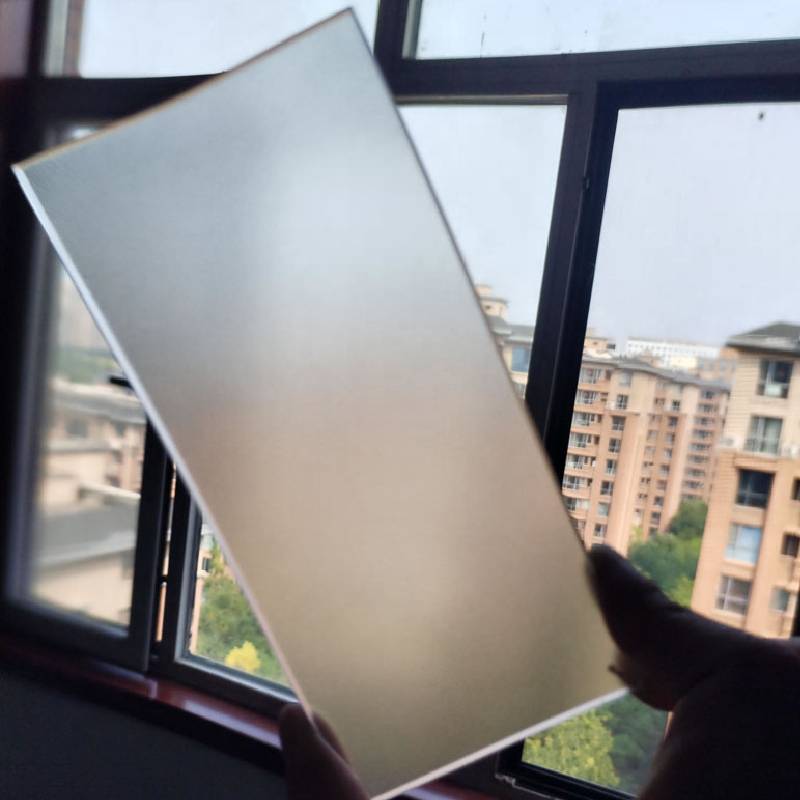The Fascinating World of One-Way Glass A Reflection on Transparency and Privacy
One-way glass, also known as mirror glass or two-way mirror, is a remarkable invention that plays a crucial role in various fields ranging from architecture to psychology and even law enforcement. This intriguing material combines the properties of transparency and reflection, creating a fascinating subject that raises questions about privacy, observation, and human behavior.
At first glance, one-way glass appears to be a typical mirror; its reflective surface conceals what lies behind it, allowing individuals in front of it to see their reflections clearly. However, the magic happens when one considers the light conditions on either side of the glass. One-way glass is engineered to reflect light on one side while allowing a certain amount of light to pass through from the other side. This phenomenon occurs when one side of the glass is significantly brighter than the opposite side. In such scenarios, the person facing the brighter side sees only their reflection, while those on the darker side can see through.
The Fascinating World of One-Way Glass A Reflection on Transparency and Privacy
In a more mundane context, one-way glass is often used in offices and conference rooms. Here, it provides privacy for meetings while allowing natural light to flow through the space. This type of glass can make an office feel more open and inviting, leading to a more pleasant work environment. Moreover, it enables coworkers to maintain a degree of separation while still feeling connected to the buzz of the office.
mirror one way glass
However, the use of one-way glass raises important questions about privacy and ethics. The fact that individuals on the darker side can see through the glass without being seen creates a power imbalance. In situations such as interrogations, observers may gather intimate insights about a person’s character or thoughts without their knowledge. This can feel invasive and may erode trust in authority figures, prompting discussions about ethical interrogation practices.
From a psychological perspective, one-way glass also impacts human behavior. When individuals know they are being observed—especially without their consent—they may alter their behavior. This phenomenon, known as the Hawthorne effect, suggests that people change their actions when they are aware of being watched. Therefore, the presence of one-way glass can lead to distorted outcomes in behavioral studies and interviews, as subjects may become more guarded or perform differently when unsure of their level of visibility.
Artistically, one-way glass presents unique opportunities for expression. Modern artists have begun to explore themes of visibility, surveillance, and anonymity through installations that incorporate this type of glass. By creating spaces that manipulate what can be seen and what remains hidden, artists provoke thoughts about social norms surrounding privacy and observation in our increasingly monitored world.
In conclusion, one-way glass serves as a powerful metaphor for transparency and privacy in our daily lives. While it offers practical advantages in security and design, it also raises ethical dilemmas regarding the observation of human behavior. As technology continues to advance and the lines between public and private spaces become increasingly blurred, society must navigate the complexities introduced by materials like one-way glass. It challenges us to consider the balance between safety and privacy—an essential conversation in our modern age. Whether in the context of law enforcement, healthcare, or everyday interactions, the implications of one-way glass inevitably reflect the broader societal dynamics at play, reminding us of the delicate interplay between being seen and being invisible.
 Afrikaans
Afrikaans  Albanian
Albanian  Amharic
Amharic  Arabic
Arabic  Armenian
Armenian  Azerbaijani
Azerbaijani  Basque
Basque  Belarusian
Belarusian  Bengali
Bengali  Bosnian
Bosnian  Bulgarian
Bulgarian  Catalan
Catalan  Cebuano
Cebuano  Corsican
Corsican  Croatian
Croatian  Czech
Czech  Danish
Danish  Dutch
Dutch  English
English  Esperanto
Esperanto  Estonian
Estonian  Finnish
Finnish  French
French  Frisian
Frisian  Galician
Galician  Georgian
Georgian  German
German  Greek
Greek  Gujarati
Gujarati  Haitian Creole
Haitian Creole  hausa
hausa  hawaiian
hawaiian  Hebrew
Hebrew  Hindi
Hindi  Miao
Miao  Hungarian
Hungarian  Icelandic
Icelandic  igbo
igbo  Indonesian
Indonesian  irish
irish  Italian
Italian  Japanese
Japanese  Javanese
Javanese  Kannada
Kannada  kazakh
kazakh  Khmer
Khmer  Rwandese
Rwandese  Korean
Korean  Kurdish
Kurdish  Kyrgyz
Kyrgyz  Lao
Lao  Latin
Latin  Latvian
Latvian  Lithuanian
Lithuanian  Luxembourgish
Luxembourgish  Macedonian
Macedonian  Malgashi
Malgashi  Malay
Malay  Malayalam
Malayalam  Maltese
Maltese  Maori
Maori  Marathi
Marathi  Mongolian
Mongolian  Myanmar
Myanmar  Nepali
Nepali  Norwegian
Norwegian  Norwegian
Norwegian  Occitan
Occitan  Pashto
Pashto  Persian
Persian  Polish
Polish  Portuguese
Portuguese  Punjabi
Punjabi  Romanian
Romanian  Russian
Russian  Samoan
Samoan  Scottish Gaelic
Scottish Gaelic  Serbian
Serbian  Sesotho
Sesotho  Shona
Shona  Sindhi
Sindhi  Sinhala
Sinhala  Slovak
Slovak  Slovenian
Slovenian  Somali
Somali  Spanish
Spanish  Sundanese
Sundanese  Swahili
Swahili  Swedish
Swedish  Tagalog
Tagalog  Tajik
Tajik  Tamil
Tamil  Tatar
Tatar  Telugu
Telugu  Thai
Thai  Turkish
Turkish  Turkmen
Turkmen  Ukrainian
Ukrainian  Urdu
Urdu  Uighur
Uighur  Uzbek
Uzbek  Vietnamese
Vietnamese  Welsh
Welsh  Bantu
Bantu  Yiddish
Yiddish  Yoruba
Yoruba  Zulu
Zulu 

